A Portrait Of John Doe is the first collaborative album between Floex and Tom Hodge. It’s an alluring record combining electronica and classical orchestra—finding balance and tension between two opposing elements on the musical spectrum. One real and one artificial. The response from both musicians of our review prompted Andrew Danso to give them a call and find where we got things wrong. We’ll state here that our minds have changed after two conversations with them both—the review holding only a limited position.
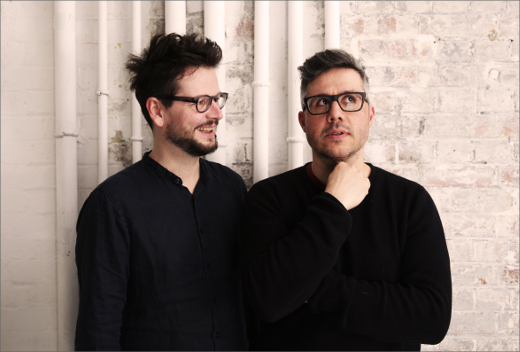
A Portrait Of John Doe is the first collaborative album between Floex and Tom Hodge. It’s an alluring record combining electronica and classical orchestra—finding balance and tension between two opposing elements on the musical spectrum. One real and one artificial.
Tension also opened our dialogue. Our review touched on notions of polarization heard in the albums sound, namely that collaboration was not heard. I discussed an audible division between the two, chiefly that Floex sounded more dominant over Tom Hodge. The response from both musicians prompted me to give them a call and find where we got things wrong. We’ll state here that our minds have changed after two conversations with them both—the review holding only a limited position.
Listen to the full audio recording of the interview:
Audio Player
Igloo :: Tom, you wrote that you felt belittled, in parts, by my review, why was that?
Tom :: Well, I was a little surprised by the focus of the review. There seemed to be a lot of time spent questioning my role, where I was more than happy to read about the music. I was just so surprised there was so much concern, trying to label it as a Floex record.
Igloo :: The idea of one dominating over the other is just factually incorrect—it just didn’t happen?
Floex :: Absolutely it didn’t happen. I also felt uncomfortable [about the review]. I got credits that I shouldn’t get… It’s very much a co-operative album. My role was mostly production. Toms musical impact is really huge. I learned a lot from Tom and his approach. Tom’s like a Mozart musically. He’s more refined musically [than me]. This record, thanks to this fact, has more clarity.
Igloo :: Being united in clear rebuttal of the review gave strength to their position. Collaboration appeared to be the heartbeat of A Portrait Of John Doe. Evidence of this comes up as they both think back to how they began making the album—both digging deep to uncover their own history together. There wasn’t a clear decision on the roles each would take as they made the album. Words like spontaneous, seamless and flow popped up often in our conversation. Labelling one of them to be creator and the other to oversee that creation, appeared to be wrong. As they reflect, the interactions between the two emerged to be adaptive and flexible.
Tom :: You know, we often talk about how the tracks were born—it was a seamless thing. Those feelings are in stark contrast to what we read in your review. I think you asked at one point, where was I in our signature track, “Wednesday (Is The New Friday)”? Well, there’s a quirky little piano opener, the harmonic progressions, the orchestrations, to me it’s… Maybe it’s the fact that Tomáš [Floex] and I have such crossover, which made it possible to operate on such a deep level. We have similar inclinations—we didn’t realize this as we started doing this. It became possible to complete each other’s musical sentences.
Tom :: I mean, the point is… there’s some magical Floex moments, but I’d like to think there’s some magical Tom Hodge moments too.
Floex :: I’ll add from what Tom said, we complete each other musically. We never even had this ‘blank moment’ in the studio which a lot of musicians have.
Igloo :: For Floex, when did you start working on this album? And Why Tom Hodge?
Floex :: All of this was very spontaneous. We met at a festival in Berlin hosted by Denovali records, where we both used to be signed. I knew Tom’s albums—I really loved Tom’s Piano Interrupted albums. They were my favorite albums on Denovali. I wanted to speak with Tom—I just approached him…
Igloo :: There was this instant connection with Tom…
Floex :: Haha, yes, exactly. And very soon after this meeting, we had the idea for Tom to come to Prague and try something.
Tom :: Yeah, it was very much, ‘let’s have some fun’ kind of thing. I guess this is an example of how organic it was. It was very comfortable when we met. I put a lot of stock in that—if something feels right. I was fascinated to see how Tomas did things as well. It was just a very natural and easy thing. Then we simultaneously got to know each other and our musical ways at the same time—we only had a couple of chats and there we were in the studio. We were building our own relationship through our music making.
Igloo :: Tom, hadn’t you done the Samorost 3 remixes before you met Tomáš [Floex]?
Tom :: No, that was after we met. Tomáš was still finishing Samarost 3 [when we met] and then he asked me if I wanted to do one of the remixes.
Igloo :: Was it useful for you guys to get know each other musically on Samarost 3 remixes?
Floex :: We already knew each other intimately from the studio, so…
Tom :: Well… I think it was Tomáš [Floex] making a choice—he was picking remix partners for the Samarost 3 EP in advance for the Samarost 3 release. We had spent a lot of time together, so he already knew my voice by then. So, it was kind of the other way around.
Floex :: We did a swap actually, so I did a remix of a Piano Interrupted track.
Tom :: Oh yeah, Tomáš [Floex] did a remix of that! So yeah, there’s that nice reciprocal artists thing that goes around with artists. Amongst our wider group we’re always asking our friends and colleagues to do remixes and vice versa.
Igloo :: I’m wondering then if the Samorost 3 remix and these other remixes were demos to A Portrait Of John Doe?
Floex :: I don’t think so. The process was much deeper—the chemistry we brought together…
Tom :: The sounds that we came up with from the beginning were from our combined brains (when writing A Portrait Of John Doe), but the remixes are much more individual.
Floex :: But here is one other point which is interesting and proves our point again [about the error in the review]—if you listen to these remixes by each other, Tom’s ideas are developed through piano and are different from mine.
Tom :: Yeah, of course. You can hear the certain voices, they key production traits in Tomas’ remixes. Or me moving his piece into a compound time signature. I mean this is the general point about the artists voice: you get this fascinating cross-fertilization.
Igloo :: Tom, how did this collaboration feel in comparison to working with Max Cooper?
Tom :: It was different in that… with Max [Cooper] it was much easier to separate mine and Max’s roles. With Tomáš [Floex] it was like we were completing each other’s musical sentences. With Tomáš [Floex] we’d seamlessly move from the piano and clarinet, between synths, pots and pans. It was very, very fluid as to who was doing what. With Max it was much clearer.
Igloo :: One other sticking point in our review was the clarity behind the concept A Portrait Of John Doe—what did it mean? The review struggled to come to terms with it.
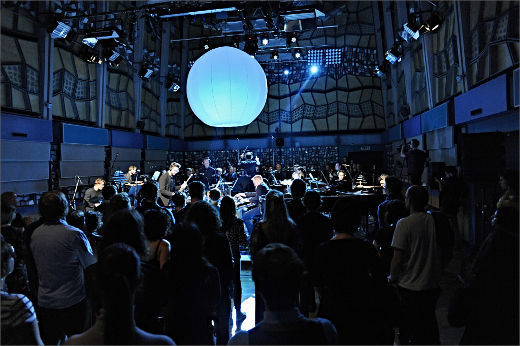
Igloo :: What does the concept A Portrait Of John Doe Mean?
Floex :: It was this idea of creating an imaginary person, basically whoever. Inspired by everybody trying to show him/herself on social media and we put a lot of effort on this outside representation of a person. So, we tried to answer the question ‘what is important in life?’. In our track Wednesday (Is The New Friday) you literally have this guy, John Doe, going to work. But he doesn’t want to go to work—he wants to go party. We realized these stories are what everyone knows.
Tom :: For our track Wednesday (Is The New Friday) I like this Gods-eye view it represents. It’s about more of a wider commentary. Like black is the new white. This is the new that. Wednesday is the new Friday. About how we’re desperate to present the new and the shiny when it comes to this world of social media. I think of the wider commentary there—separating myself from John who is having this day. You could run two narratives there, one for myself and one for John.
Igloo :: For me, and from our last conversation, the concept literally translated to “A Portrait Of An Everyday Man,” yet you can bring your own meaning to it. Is that correct?
Tom :: Yeah, I think that’s right. It had to also resonate with us. So, there’s aspects of our own stories in there. It can hopefully resonate with anyone—because there’s these moments in people’s lives that happen to anyone.
Floex :: I would say that it’s not about creating this communist idea, hahaha… it’s more about precious moments in our lives. The songs are big—we’re trying to point out that these things are important (your work day).
Tom :: Yeah, I mean, you can have a really complex deep song about Wednesday literally being the new Friday, where it can be a party song, for John getting out of work. I remember when we first spoke you said the track was quite complex. And for that reason, it demonstrates you can have complex music about these simple track names. Simple but important moments.”
Igloo :: What was it like to be in the studio with you guys—it was quite a loose process?
Tom :: For someone else to be in there it would have been pretty confusing. We were shifting, pivoting from one thing to the other, seamlessly, without too much great discussion. Following feelings.
Floex :: There are two aspects. To start something was hard. Once we had something, we had this associative process. We wouldn’t improvise exactly. We’d make a loop and then try this and that and create a kind of motion together.
Floex :: I would say there are three main stages to the overall album production. First phase, we met in Prague for jamming sessions. Second phase was use of the symphonic orchestra. The third phase was the production, finalizing the mix and recording the orchestra.
Igloo :: I have a feeling in phase 2, Hodge controlled the orchestra and phase 3 was Floex’s stamp at the end…
Tom :: I suppose that’s absolutely the case. When it came to orchestra side of things, Tomas had a lot to say. I was the safety net. To wield those kind of forces is challenging. There was no way it was going to go off the rails—there’s lots of phases, there’s writing, there’s arranging. Then writing the parts so that the orchestra understands it. Then recording it. And then when you get that, it just becomes something out the speakers again. When you have a beautiful, pristine orchestral recording it sounds so magical. You don’t want to touch it. I mean, there’s multiple phases within that, but generally, yeah.
Tom :: It was a massively technical feat from Tomáš [Floex] to pull off (overseeing album production). I suppose we concerned ourselves with the supremacy of elements within a track and how to weight them. Orchestra usually wins—yet it was very difficult to find were the orchestra began and the electronic ended and vice versa. The takeaway from the record is that I can still happily listen to it and find that balance. It’s informed my thinking of music since then.
Floex :: I think the point was that we didn’t want to get crazy—but to try to think about it (the orchestra) as another instrument. Try to make that blend. For example, listen to our track Wednesday (Is The New Friday) at the beginning. There’s the melody and we played a lot with layering. All these layers go together, and it creates a new quality. How does the harp go with the bassoon? They’re not that far from each other, the harmonics and so on. Another point was not being afraid to effect, heavily, the orchestra. Of course, you lose the authentic quality sometimes. I never did something like this before. I was happy to learn from Tom.
Igloo :: Was there an artist or band that you’d modeled the sound of this record too?
Floex :: No, inspiration doesn’t go like that with me. It’s more, how this guy works with something. I would say over time, there was a general sound concept we came up with. We used a lot of progressive production things—we also tried to make the orchestra retro. We wanted that big sound of the 60s, 70s orchestra.
Tom :: Somehow that was unifying, making it sound 60s linked to the electronics.
Floex :: In the studio I have these spring reverbs, you know. It has a real spring inside it. It would create this 60s feeling. And then we used a Chandler Compressor on every track. So, we had these elements in place to make it more analogue sounding.
Igloo :: The sound of the album was pretty damn modern to me. I definitely thought it was a modern sounding record.
Floex :: I mean, yeah, there’s two polarities. There’s two elements, not just the one. If you put everything together it’s not an old school record. It’s two things against each other. Putting things against each other and then together creates this tension. These polarities create this tension.
A Portrait Of John Doe is available on MercuryKX.






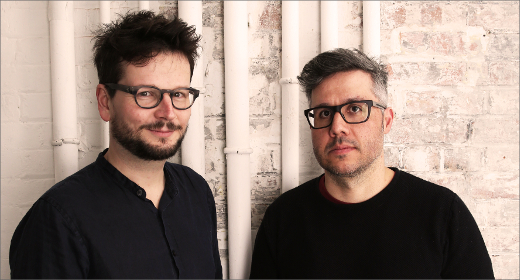



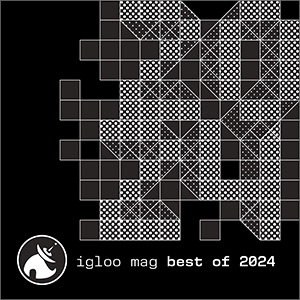
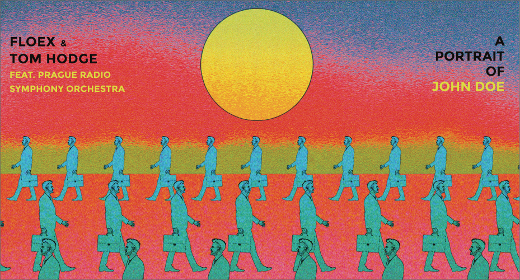
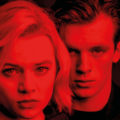
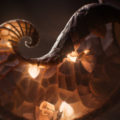
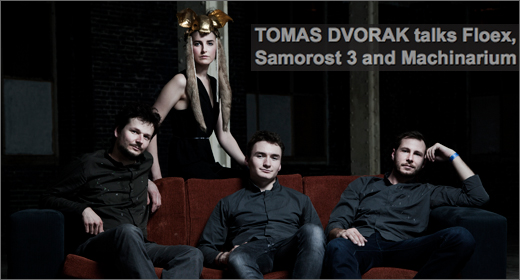
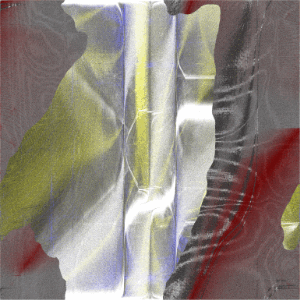

![Ndorfik & madebyitself :: Solos EP (People Can Listen) — [concise]](https://igloomag.com/wp/wp-content/uploads/2025/04/ndorfik-madebyitself-solos_feat-75x75.jpg)








